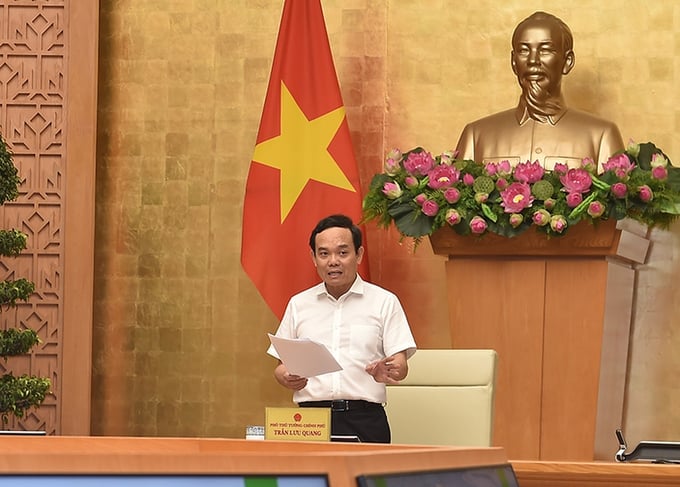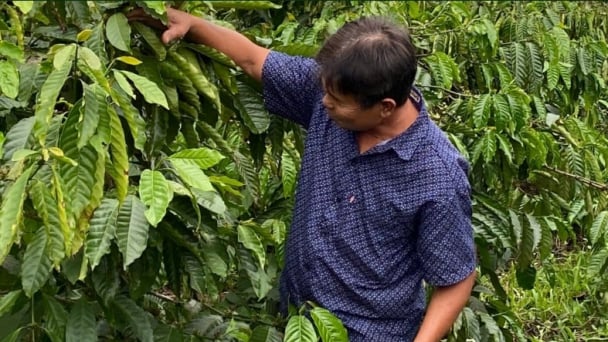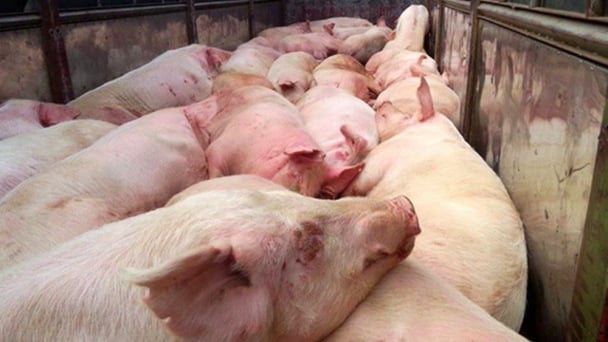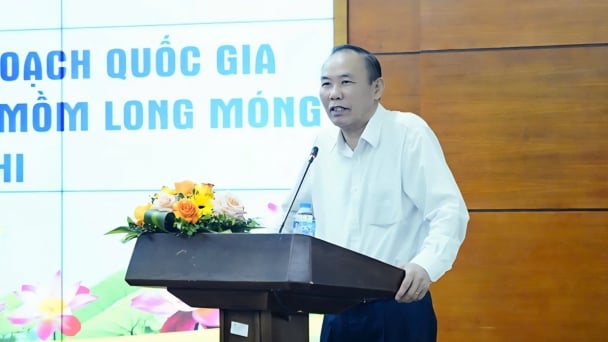June 19, 2025 | 00:05 GMT +7
June 19, 2025 | 00:05 GMT +7
Hotline: 0913.378.918
June 19, 2025 | 00:05 GMT +7
Hotline: 0913.378.918

Deputy Prime Minister Tran Luu Quang requested relevant parties to respond (if any) no later than Friday, June 21. Photo: VGP.
The National Forestry Planning was initiated in 2020 to address the issue of expanding forest area over time, while acknowledging the relatively low quality of forests, particularly natural forests. The Department of Forestry's statistics indicate that a significant proportion of woods, specifically 66.5%, are classified as poor, while 24.8% are categorized as average.
Moreover, the productivity of planted forests is insufficient, mainly providing small-sized timber, which fails to meet the requirements of the wood processing and export sectors. The technological prowess in many sectors of the economy is still at a low level, and the investment climate is filled with uncertainties. Instances of noncompliance with legislation pertaining to the protection and development of forests, such as illicit logging, encroachment, and uncontrolled exploitation of forest resources, continue to persist.
In order to tackle these concerns, the planning prioritizes enhancing the caliber of pre-existing natural forests. The projected average annual growth rate in the added value of forestry production is expected to range between 5 and 5.5%.
The strategy entails the annual planting of 238,000 hectares of production forests, 8,600 hectares of conservation and special-use forests, and the restoration of 22,500 hectares of natural forest. It is projected that by 2030, the total area of forest that will have obtained certification for sustainable management would surpass 1 million hectares.
The objective is to achieve an export value of $20 billion for wood products and forestry goods by 2025, and $25 billion by 2030. The projected domestic consumption of wood goods and forestry products is anticipated to increase to $5 billion by 2025 and further rise to $6 billion by 2030.
The predicted yearly growth rate for revenue from forest environmental services is 5%. The projected annual revenue from forest environmental services is anticipated to be 3,500 billion VND for the period of 2021-2025 and 4,000 billion VND for the period of 2026-2030.
In the period from 2021 to 2030, the combined area of national forests and forestry land is 15.848 million hectares. Special-use forests make up 15.5% of this area, protection forests account for 33%, and production forests cover 51.5%. The national forest coverage rate is projected to remain constant at a range of 42% to 43%.
During the discussion, the Minister of Agriculture and Rural Development voiced optimistic anticipation for the forthcoming National Forestry Planning. He is of the opinion that the planning will improve the potential and benefits of indirect values such as ecological variety, biodiversity, and genetic resources of forests.

The Ministry of Agriculture and Rural Development is expected to need more than 200,000 billion VND to implement the National Forestry Plan 2021-2030.
The Minister estimated that a total of 217,305 billion VND would be necessary for the implementation of the planned. Out of this amount, approximately 107,000 billion VND would be needed for the period of 2021-2025, which represents nearly 50% of the entire capital requirements.
Deputy Prime Minister Trần Lưu Quang concluded the meeting by instructing ministries, sectors, and localities to persist in examining the draft plans. All supplementary comments, if any, must be submitted to the Ministry of Agriculture and Rural Development by Friday, June 21st, in order to finalize the planning dossier.
The Deputy Prime Minister instructed the Ministry of Agriculture and Rural Development to thoroughly examine and verify the precise data regarding the extent of forest and forestry land in different regions. This includes accurately determining the area of each specific type of forest found on special-use forest land, protection forest land, production forest land, as well as forests on other types of land such as swidden land and hillside gardens.
The Government leader stressed the importance of minimizing modifications and eliminations of special-use and protection forest areas in the National Forestry Planning. Forests are a crucial asset for Vietnam, as they support the livelihoods of people and contribute to environmental protection and nature conservation.
In addition, he emphasized the necessity of conducting a comprehensive inventory of protection forests, special-use forests, and production forests in order to establish standardized input databases. These databases would serve as the basis for formulating policies that promote production and forestry development.
The Forestry Planning is a national sectoral plan for the period up to 2030, overseen and coordinated by the Ministry of Agriculture and Rural Development. It is one of four such plans. Other plans encompass the Planning for Disaster Prevention and Control and Irrigation, the Planning for Protection and Exploitation of Fishery Resources, and the Planning for the System of Fishing Ports and Storm Shelters for Fishing Vessels.
Translated by Linh Linh

(VAN) After 5 years of implementation, the CAI initiative has helped coffee growers change their farming practices, moving toward responsible agriculture that meets global export standards.

(VAN) The primary prerequisite for the comprehensive and robust integration of Vietnam's livestock sector into the global value chain is the establishment of a disease control system.

(VAN) The results of national programs are essential for establishing a contemporary livestock sector that is well-equipped to meet the demands of both domestic and international markets, with robust biosafety standards.

(VAN) The UNESCO Global Geopark revalidation of Non nuoc Cao Bang and the transition to a two-tier administrative model are presently undergoing a pivotal moment in Cao Bang, the northernmost province of Vietnam.
/2025/06/13/5330-2-004539_953.jpg)
(VAN) Changing policy mindset and removing investment barriers are urgent requirements to open up new development space for enterprises in the agricultural sector.

(VAN) The areas include the restoration of five million hectares of marine ecosystems.

(VAN) Dr. Le Van Nguyen, Director of the Institute of E-Commerce Management (ECM), emphasizes the potential for green development through the cultivation of fruit trees, particularly in provinces such as Son La.